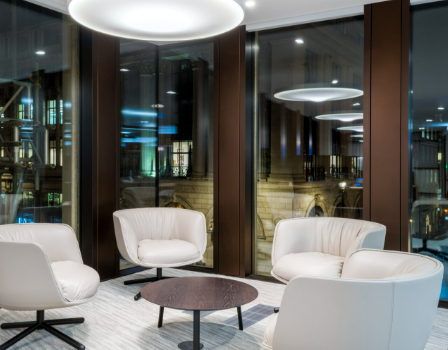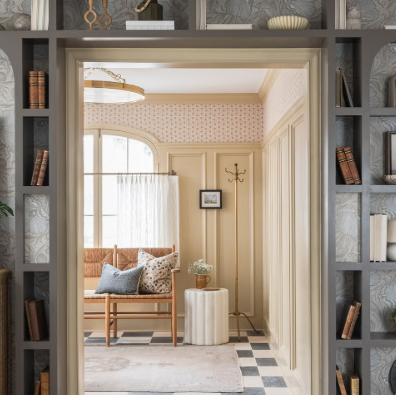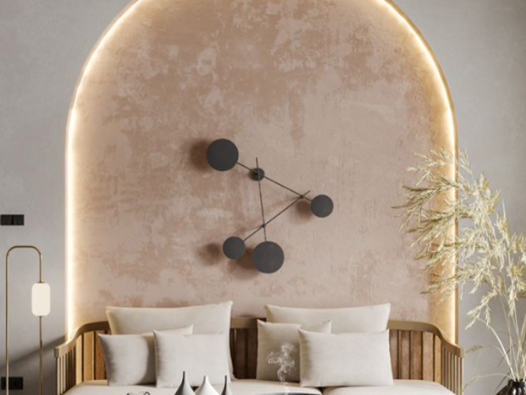
The future of office architecture is rapidly evolving, with 2025 bringing forward exciting innovations that will change how we work, collaborate, and interact in professional spaces. From sustainability to technology-driven solutions, the modern office is becoming a hub of creativity, flexibility, and well-being. Whether you’re updating your existing office or designing a new space, understanding these key trends will help you create a workplace that supports productivity and fosters a positive, inclusive culture.
1. Eco-Conscious and Sustainable Designs
Sustainability is no longer a trend; it’s a fundamental aspect of modern office design. Offices today are integrating green building practices, such as energy-efficient systems, eco-friendly materials, and natural elements like indoor plants and green walls. These sustainable design choices reduce the environmental footprint while enhancing the overall health of the workspace. For businesses in eco-conscious regions like the Bay Area, utilizing solar energy, water recycling systems, and sustainable furniture is a priority. These features not only benefit the planet but also promote employee wellness by creating a more comfortable and healthier environment.
2. Flexible Hybrid Workspaces
The rise of hybrid work models is transforming how offices are designed. Spaces now need to accommodate both in-person collaboration and remote work. As a result, the focus is on creating flexible, multipurpose areas that can quickly shift between meeting spaces, quiet zones, or break-out areas. Adaptable furniture and modular layouts make these transformations easy, while integrated technology—like virtual conferencing pods and smart systems—ensures seamless communication between in-office and remote employees. This trend reflects the shift towards more dynamic, employee-focused work environments that can adapt to the needs of diverse teams.
3. Employee Well-Being at the Core
As the focus on employee wellness grows, modern office design is prioritizing features that support mental and physical health. Wellness-focused spaces like meditation rooms, fitness areas, and ergonomic workstations are becoming standard. Natural materials such as wood, stone, and glass are used to create calming environments, while acoustic treatments ensure privacy and reduce noise. Furthermore, improved air filtration systems and optimized layouts that maximize natural light help foster a positive atmosphere, ensuring that the office remains a space for both productivity and personal well-being.
4. The Rise of Smart Offices
Technology is at the heart of future office designs. Smart offices equipped with IoT (Internet of Things) devices allow employees to personalize their workspaces—adjusting lighting, temperature, and even desk height from their mobile devices. AI and automation further enhance operational efficiency, from managing energy use to providing data-driven insights for decision-making. Additionally, integrated security systems, occupancy sensors, and energy-efficient technologies make workplaces safer and more sustainable, offering a futuristic environment without compromising on user experience.
5. Spaces Designed for Collaboration
The post-pandemic shift in office design emphasizes creating spaces that encourage collaboration and community building. Open layouts are being reimagined to include flexible seating arrangements, movable walls, and communal areas that enhance interaction among teams. Breakout zones and brainstorming rooms are becoming integral parts of office plans, where employees can gather to generate ideas or relax during breaks. These spaces are designed to stimulate creativity, fostering innovation in workplaces that thrive on teamwork and collaboration.
6. Embracing Minimalism and Timeless Design
Minimalist design continues to dominate the office space, creating an environment that is simple, open, and free from clutter. Clean lines, neutral color schemes, and minimalist furniture contribute to a calming atmosphere that promotes focus. However, the trend has evolved to incorporate subtle touches of warmth, such as wooden elements and textured fabrics, making spaces feel both modern and inviting. The goal is to balance simplicity with personal style, often incorporating local cultural influences or custom artwork to add character to the space.
7. Fostering Inclusivity and Accessibility
Future office designs are embracing inclusivity, ensuring that workspaces are accessible to everyone. This includes universally designed layouts that accommodate people of all abilities, such as wheelchair-friendly pathways, adjustable desks, and gender-neutral restrooms. Sensory-friendly rooms, prayer spaces, and quiet zones are also becoming common features. These elements are essential for creating environments where all employees feel valued, and they reflect the growing importance of diversity in the workplace.
8. Integrating Art and Local Culture
Art and culture are increasingly woven into office design, transforming bland workspaces into inspiring environments. Custom artwork, wall murals, and handcrafted pieces add personality and reflect a company’s identity. In areas like the Bay Area, local artists are often incorporated into the design, giving spaces a unique, regional feel. These artistic elements not only beautify the space but also foster a sense of connection and pride among employees, helping to create a workplace that feels more like a community.
9. Sustainability Beyond Construction
Sustainable design in offices extends beyond building materials to operational practices. Offices are now incorporating systems that manage waste efficiently, reduce energy consumption, and minimize water use. Renewable energy sources and sustainable transportation options, such as electric vehicle charging stations and bike storage, are becoming more common. This holistic approach to sustainability ensures that every aspect of the office contributes to a greener future.
10. Preparing for Future Challenges
Flexibility is key when designing offices for the future. With the unpredictable nature of the workplace, future-proofing spaces is a priority. Modular furniture, adaptable layouts, and durable materials are being chosen for their long-term versatility. These elements allow offices to quickly adjust to new needs, whether that means accommodating more employees, adjusting to health regulations, or reconfiguring the space for different activities. This resilient approach ensures that the office remains relevant and functional for years to come.
Conclusion
As we move towards 2025 and beyond, office architecture is embracing a blend of technology, sustainability, and human-centered design. From hybrid workspaces to wellness-focused environments, the modern office is evolving into a dynamic, adaptable space that prioritizes both productivity and employee well-being. Whether you’re in the Bay Area or elsewhere, designing a forward-thinking office will require a combination of smart technology, sustainable solutions, and a focus on inclusivity. The office of the future isn’t just a place to work—it’s a space that nurtures creativity, collaboration, and personal growth.










